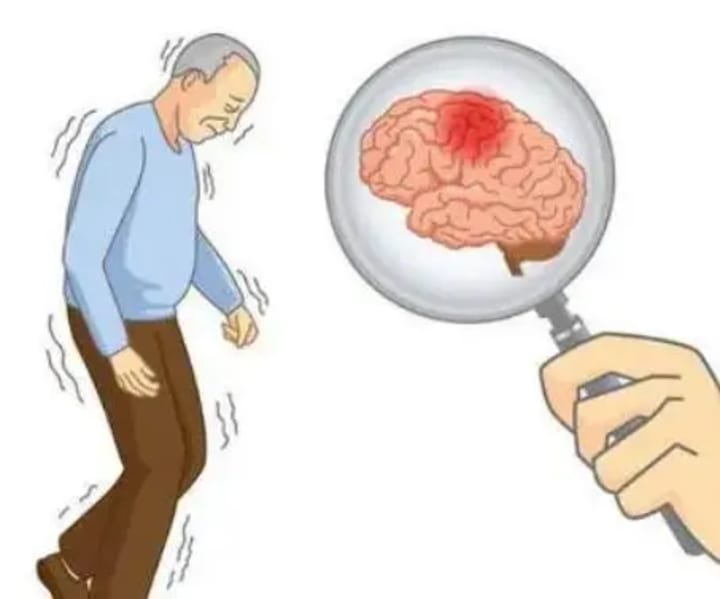High blood lipids, look at the feet to know!
When blood lipids are elevated, the body also has these signs

Many diseases are closely related to blood vessels, and high blood lipid levels in the body have a great impact on the body.
The prevalence of dyslipidemia in Chinese adults is over 25%, and about one in four people suffer from hyperlipidemia. About 3.9 million people worldwide die from hypercholesterolemia each year, half of them from China and other Southeast Asian countries.
High hyperlipidemia is directly related to your blood health problems. When the blood becomes thick, the blood circulation throughout the body slows down or even stagnates without flow. This is likely to endanger your life with cerebral infarction, heart attack, and blood vessel embolism, which can lead to sudden death.
01
About hyperlipidemia
What are the indicators of hyperlipidemia?
Hyperlipidemia generally includes high triglycerides, high total cholesterol, and low HDLemia, and the specific values in clinical practice are as follows.
Triglycerides over 1.7 mmol per liter can be diagnosed as hypertriglyceridemia, total cholesterol over 4.5 mmol per liter can be diagnosed as hypercholesterolemia, and HDL cholesterol, a little less than one mmol per liter, can be diagnosed as hypoHDL cholesterolemia.
[Complications of hyperlipidemia
1. Coronary heart disease
Excessive fat in patients with hyperlipidemia, can affect arteriosclerosis and obstruct blood flow, which can lead to complications of coronary heart disease.
2. Cerebral infarction
If the patient's hyperlipidemia is not controlled for a long time, it will cause plaque deposition in cerebral arteries, and excessive accumulation of lipids will cause narrowing of cerebral blood vessels and even complications of cerebral infarction.

3. Fatty liver
High blood lipids indicate that the fat in the body is in a state of excess, which has the direct consequence of weakening the blood flow and affecting the process of fat decomposition.
When too much fat appears in the internal organs, it is easy to cause fatty liver, which is still very dangerous to health.
4. Diabetes
High blood pressure, high blood pressure, and high blood sugar are collectively known as the "three highs" and pose a serious threat to the life and health of diabetics.
High blood pressure can aggravate the patient's condition, so the clinical treatment of high blood sugar is usually accompanied by some regulation of blood lipid treatment.
And hyperlipidemia is an important cause of late complications of diabetes, such as coronary heart disease, fundus necrosis, nephropathy, neuropathy, etc. Active treatment of hyperlipidemia can effectively prevent the occurrence of these complications.
Can I donate blood for hyperlipidemia?
Doctor: It is generally possible to donate blood for hyperlipidemia.
However, before donating blood, you need to control your blood lipids within the normal range, such as taking lipid-lowering medication with your doctor, and also through a dietary regimen. It is also possible to donate blood if your blood lipids are within the normal range.
However, before the reality, you need to strictly control your diet, do not eat high-calorie and greasy food, so as not to affect the blood lipids, which is not conducive to blood donation.
02
High blood lipids, see the feet will know! Feet if there are no these 4 performances, congratulations on your blood vessels are very clean
1. feet often cramp
For many people awareness of foot, cramps are generally understood as a lack of calcium in the body, but in addition, high blood lipids can also lead to leg and foot cramps.
If you find yourself with frequent leg and foot cramps, then the blood lipids in your body should all be high.
The feet are the farthest part from the heart, and if blood is not supplied to the feet for a long time, it can lead to cramps.

2. Abnormal changes in the color of the legs
The lipid infiltration theory states that "lipids are deposited on the arterial intima, which leads to connective tissue proliferation, and in the process, the lipids not only damage the endothelial cells but also further hinder the functioning of lipids for discharge."
In layman's terms, the excess lipids in the body of a hyperlipidemic patient can damage the blood vessels and cause poor blood circulation.
The legs and skin of the legs will turn white when the patient lifts his legs and then turn slightly red or purplish when he puts them down.
3. Abnormal toenail color
Under normal circumstances, toenails should appear light pink and have a highly glossy nail surface. Sitting for a long time or bending your legs, look down and see that your toenails appear lavender, indicating that the blood is more viscous.
The feet are located away from the heart, where blood flow is relatively slow, and if the blood is sticky, it will flow more slowly. Fresh blood cannot reach in time, and the toenails will appear lavender.
4. Slow healing of wounds on the feet
Elevated blood lipids will affect the speed of blood flow in the feet, resulting in a decrease in the amount of blood in the feet, which does not nourish the feet well. Once the feet are injured, the clotting factors in the fresh blood will repair the wound in time and scab to stop the bleeding.
The feet are the part far from the heart, the blood supply itself is slow, blood lipids keep rising, the flow of blood will become slower, and the wound will be difficult to heal.
03
In addition to looking at the feet, the body also has these signs when blood lipids are elevated
1. Frequent sleepiness and weakness
Have you ever felt like this, obviously not doing much work, but feeling very tired, very easy to sleepy, this should draw our attention.
When this symptom occurs in our body, our blood lipids are elevated, because when blood lipids are elevated, our blood consistency will also rise. As a result, the nutrients in our bodies cannot be supplied properly, and eventually, our bodies will feel weak and sleepy.

2. Skin tone becomes pale
Many people have a normal skin color that is very white, but there are many people because of poor skin color, if there is a relatively pale situation, we should pay attention to whether it is due to high blood lipids.
After high blood lipids, people's blood circulation is slow, the blood supply to each part of the time will become longer, and there is no way to maintain the normal red color of the face, so people will have the problem of a pale face.
3. Transient blackness in front of the eyes
When blood lipids are significantly elevated, there will be some obvious signs on the body. If there is always a transient blurring when looking at things, the blood lipids may be too high.
To maintain normal function, human eyes need a sufficient supply of blood nutrients to meet the nutritional needs of the peripheral nerves and improve the function of the optic nerve.
Many people usually do not pay attention to the control of blood lipids, and when blood circulation is impeded when blood lipids are significantly elevated, the nutrients needed by the eyes cannot be provided, and this may lead to such performance as blurred vision or even a transient blackness in front of the eyes.
If this is the case, it is likely that the blood lipids are too high and need to be lowered reasonably.
Conclusion: High blood lipids are very harmful to the human body, and nowadays the population with high blood lipids is getting younger and younger, which has a lot to do with diet. Many young people like to eat high-cholesterol food and lack exercise, resulting in elevated blood lipids. Therefore, both the elderly and young people should pay attention to the lipid problem.






Comments
There are no comments for this story
Be the first to respond and start the conversation.